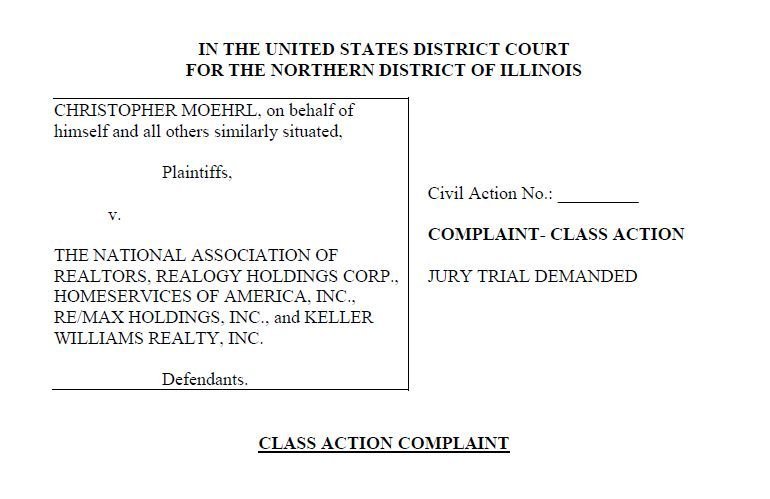Checking Out Class Action Legal Actions: What You Need to Know
Class activity lawsuits have actually come to be increasingly prevalent in today's lawful landscape, with individuals joining pressures to look for remedy against organizations and firms. In this discussion, we will certainly discover the ins and outs of class action claims, losing light on their meaning, the demands for filing, and the potential benefits and disadvantages entailed.
The Definition of Course Action Legal Actions
What specifically is the meaning of a class action claim? A class activity claim is a legal action filed by a team of people that have similar claims versus an offender. It permits a multitude of individuals, referred to as the class members, to join with each other and pursue their claims jointly, instead of each specific filing a different lawsuit. When the number of potential plaintiffs is as well big for specific legal actions to be sensible, Class action claims are usually brought. They are frequently made use of in cases entailing customer security, product liability, securities fraudulence, and work problems.
One of the vital elements of a class activity legal action is that the lead complainant, likewise called the class rep, stands for the interests of all the course participants. The court assigns the lead complainant based on their capacity to relatively and appropriately represent the class. The lead complainant works closely with the course action attorney to develop a strong case and look for settlement or various other solutions on part of the whole class.
In order for a course activity legal action to proceed, the court has to license the course. This implies that the court determines that the suit meets specific requirements, such as numerosity (a huge enough variety of class members), commonality (usual concerns of legislation or fact), typicality (the insurance claims of the lead complainant are regular of the course), and adequacy of representation (the lead plaintiff and class counsel are capable of representing the course's interests) Once the class is accredited, the legal action can move on, and any judgment or negotiation got to will relate to all class members unless they pick to opt-out.
Class action claims offer a vital objective in supplying accessibility to justice for people that may not have the resources to seek their claims separately. They likewise promote effectiveness in the lawful system by consolidating comparable claims right into a solitary action, lowering the burden on both the court and the parties included.
Needs for Filing a Course Activity Lawsuit

One more need is that the course should be adequately various. The specific number of course members needed might differ depending on the territory and the nature of the situation. It is usually expected that the class should be large sufficient that joining all the specific complainants right into a solitary suit is a lot more effective than having numerous different lawsuits.
Additionally, it is important that the class rep, who is the specific or entity bringing the suit on behalf of the course, has normal insurance claims and defenses to those of the class participants. The representative must likewise be able to effectively and rather represent the interests of the whole class.

Advantages and Disadvantages of Course Activity Legal Actions
Course action claims offer both benefits and drawbacks for plaintiffs and offenders involved in the lawful process. On the one hand, one of the significant advantages of course action legal actions is that they give a affordable and reliable way for individuals with comparable claims Visit Website to go after justice jointly. By combining numerous similar instances right into one lawsuit, course activities simplify the lawful process and save time and sources for both accuseds and plaintiffs.
Another advantage of class activity legal actions is that they allow individuals with limited sources to look for settlement for their damages. In instances where the potential recuperation is little, private legal actions may not be economically viable. However, by joining forces in a course action, complainants can pool their sources and increase their opportunities of getting a reasonable resolution.
Additionally, course actions can promote social change by holding corporations responsible for their actions. By bringing focus to widespread misbehavior or malfunctioning products, course activities can press companies to transform their practices, improve product safety and security, or apply reforms.
Nonetheless, class activities likewise have downsides. One possible negative aspect is that specific complainants may have limited control over the lawsuits process and the ultimate end result of the situation. The lead complainants and their attorneys commonly make vital decisions in support of the whole course, which might not constantly align with the individual passions of each course participant.
In addition, course activities can be lengthy and lengthy, typically taking years to reach a resolution. The intricacy and size of these suits can lead to hold-ups and long term litigation, which can be irritating for both plaintiffs and defendants seeking a prompt resolution.
Actions Associated With a Class Activity Suit
The procedure of a course activity claim commonly begins with the identification of a prospective course and the filing of a problem. Once a team of individuals who share similar claims versus a defendant is recognized, the lead complainant, or class agent, files a problem in behalf of the entire course. This grievance lays out the claimed wrongdoing and seeks problems or other relief for all participants of the course.
After the grievance is filed, the court will certainly figure out whether the case meets the requirements for course accreditation. These requirements usually include numerosity (a big adequate course), commonality (similar lawful claims), typicality (the lead complainant's insurance claims are depictive of the course), and competence of representation (the lead complainant and their lawyer can effectively represent the class's passions)
If the court licenses the course, notification is provided to all possible course participants, providing the possibility to opt-out if they wish to seek their own private cases - BioVie class action lawsuit. If a sufficient variety of course participants stay, the situation will proceed to the exploration stage, where both sides gather proof and details appropriate to the cases
Complying with exploration, the parties may participate in settlement arrangements or continue to trial. If the case goes to test and the class dominates, the court will establish the suitable damages or relief to be awarded to the course participants.
Recent Landmark Course Action Suits
With a strong understanding of the steps included in a course activity claim, it is currently vital to take a look at some recent spots situations that have made a substantial impact in the lawful landscape. Assertio class action lawsuit. These instances have not only formed the method class action legal actions are performed however have also produced modifications in numerous sectors
One such site situation is the Volkswagen emissions rumor, which led to the biggest class activity settlement in auto background. This deceptiveness impacted millions of consumers worldwide, leading to a course activity lawsuit.
An additional significant situation is the Johnson & Johnson talcum powder lawsuit. Hundreds of ladies submitted suits against the business, claiming that their talcum powder items created ovarian cancer pop over to this web-site cells. In 2018, a court granted $4.7 billion in problems to 22 complainants. This case elevated issues regarding the safety of talc and prompted Johnson & Johnson to modify their item labeling.
These recent site instances show the power of course activity lawsuits in holding firms accountable for their activities and looking for justice for affected people. They serve as instances of how class activity suits can produce significant adjustments and safeguard the civil liberties of customers.
Verdict
Finally, class activity legal actions are a legal system that enables a team of individuals to jointly look for justice for a common complaint. While they supply numerous benefits such as visit this site efficiency and cost-effectiveness, there are additionally downsides such as possible for limited compensation and extensive lawful procedures. Recognizing the needs and steps entailed in filing a class activity legal action is important for individuals seeking to seek this lawful avenue. Recent landmark course activity lawsuits have highlighted the importance of such situations in promoting for customer civil liberties and corporate accountability.
One of the essential aspects of a course activity claim is that the lead complainant, additionally known as the course agent, stands for the interests of all the class members.In order for a course action suit to continue, the court has to license the class. This implies that the court establishes that the suit fulfills particular demands, such as numerosity (a large enough number of course participants), commonness (common questions of regulation or fact), typicality (the insurance claims of the lead plaintiff are common of the course), and adequacy of representation (the lead complainant and class advise are capable of standing for the class's rate of interests) As soon as the course is certified, the lawsuit can move forward, and any kind of judgment or negotiation reached will apply to all course members unless they choose to opt-out.
The procedure of a class action suit generally begins with the recognition of a prospective class and the filing of a complaint.